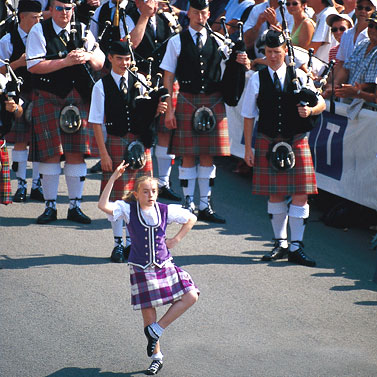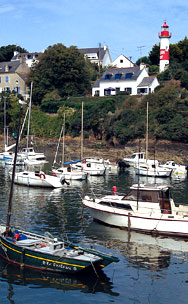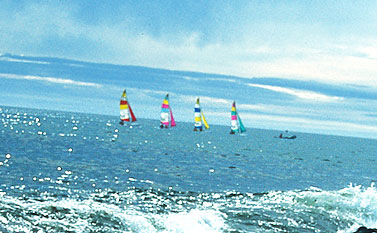- Villa search

- Canaries
- Caribbean
- Croatia, Bulgaria and Hungary
- Cyprus
- Florida
- France and Corsica
- Greece
- Italy
- Lakes and Mountains
- Madeira
- Malta and Gozo
- Portugal
- South Africa
- Spain - Balearics
Information

Grande Parade des Nations Celtes at Lorient
Coming celebrations promised to be better than ever with new attractions on the banks of the Odet, ‘the prettiest river in France’. We had other plans however. We were heading 40 miles east to an even bigger Celtic showcase – Lorient’s Festival Interceltique.
'On the Place Aristide Briand the choice was between a fiddle and accordion duet and a Celtic version of heavy rock'
Accommodation is at a premium at festival time and we ended up near Pluvigner, half an hour’s drive inland. In the event we enjoyed spending unhurried mornings in serene rural surroundings, taking time out to explore local food shops and markets, stocking up with ham, pâté, saucisson and creamy cheeses for a series of memorable picnic lunches.
The first of these was at Locmariaquer, which guards the entrance to the Morbihan Gulf, a beautiful landlocked sea strewn with islands. The village sparkled blue and white in the sunshine and after visiting the Grand Menhir Brisé, the largest standing stone in the region, we found the perfect picnic spot at the end of the jetty. Or so we thought. With every mouthful we retreated further and further from the edge and by the time we were packing to go, waves were washing over the stones where not so long ago we had dangled our legs over the side.

Boats at the port of Doëlan
Of course, we should have known better, as this part of France is famous for the drama of its tides. Before leaving for Lorient we dallied on the Kerpenhir headland, where rippling ribbons of surf marked the collision of the gulf’s treacherous currents with the surging advance of the ocean.
It was late afternoon when we arrived in Lorient to find row upon row of white canvas booths with conical roofs selling books, clothes, musical instruments and various arts and crafts. There was music round every corner. Outside one pub, spectators broke into spontaneous dance; at another an Irish group held the stage. On the Place Aristide Briand the choice was between a fiddle and accordion duet and a Celtic version of heavy rock. Back at the tented village two Bretons in striped tee shirts took to the floor for rousing traditional songs followed by four instrumentalists whose harmonious arrangements set a more soothing tone.
And that was the free entertainment. Over the course of ten days there were hundreds of concerts and exhibitions, traditional and modern, native Breton and international. Not forgetting the big set pieces. At the fish market we joined 2,000 people for the Cotriade, a traditional meal of fish soup, potatoes and far breton cake accompanied by music and dance. At the Moustoir stadium we admired massed bands, dancing displays and dazzling fireworks at one of the spectacular Nuits Magiques. And, of course, we couldn’t miss the Grande Parade des Nations Celtes.
The streets were buzzing with anticipation as the faint strains of music grew louder and the first bagad rounded the corner. For the next three hours they just kept on coming. Irish dancers, Scottish pipers, Galician folk groups, Welsh male voice choirs. And wave after wave of Bretons clad in colourful costumes and an endless stream of bagads.

Rocky cove near Guidel Plages
home | destinations and editorial | villa search | property for sale | car hire | flights | services
villaseek blog | contact villaseek | links and resources | advertise your villa© Dune Root Ltd and Villaseek.com 2012 - Caribbean
- Canaries